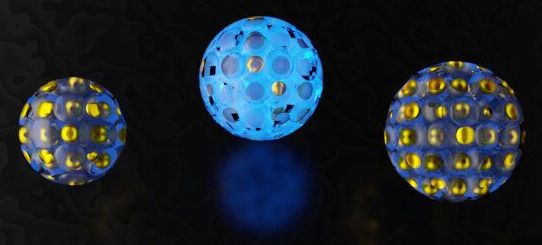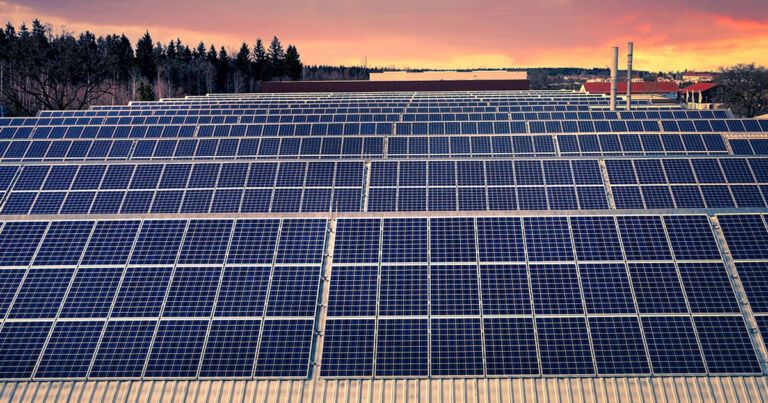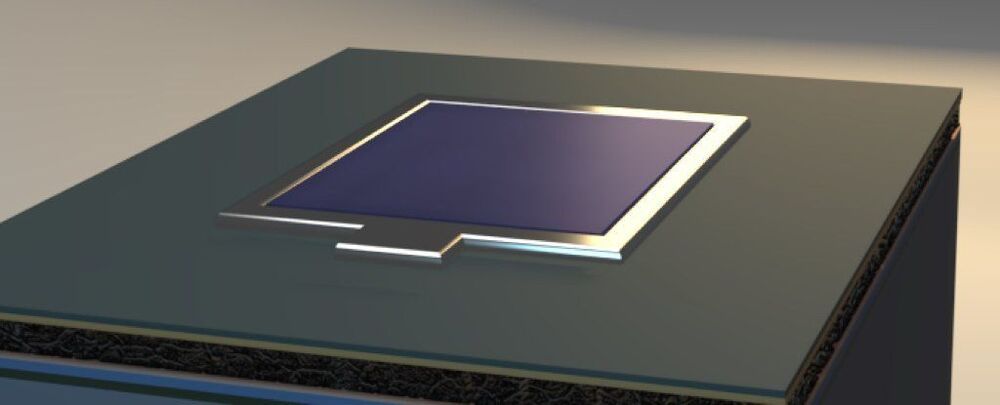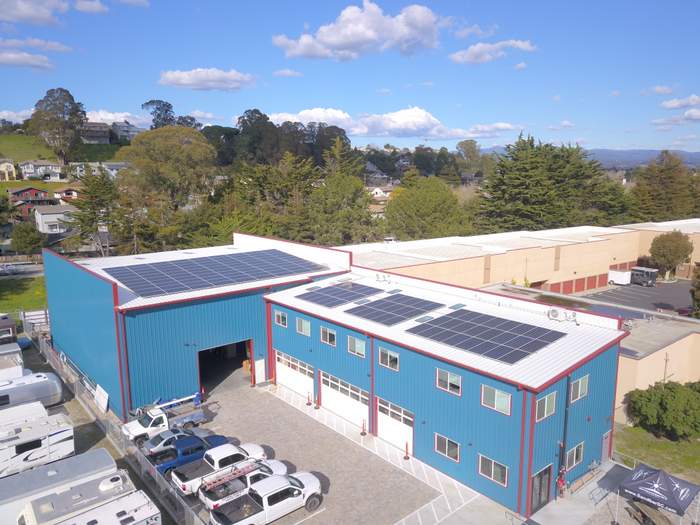This is some real sci-fi stuff.
Beaming solar power from outer space sounds like a Marvel movie plot, but space could remove barriers to solar acceptance that dominate the Earthbound discourse.


German scientists are researching a method to produce hydrogen using light and photoactive compounds on an organic chemical basis.
Hydrogen is considered to be one of the alternative energy sources of the future. So far, however, the costly and energy-intensive production process has been a major problem with regard to the environmental friendliness of this substance, which is in itself CO2 neutral. For this reason, increasing numbers of scientists around the world are researching other methods of producing hydrogen: from algae, for example. (IO reported). Scientists in Germany at the Friedrich Schiller University, the Leibniz Institute for Photonic Technologies (Leibniz IPHT) and the University of Ulm have taken inspiration from nature for their method of producing hydrogen.
To do so, the team from the “CataLight” Collaborative Research Center at the Universities of Jena and Ulm has combined new organic dyes with non-precious metal catalyst molecules that release gaseous hydrogen in water when irradiated with light. This substitute has shown a remarkable impact in terms of longevity and effect after excitation by visible light, they write in their study, published in Chemistry – A European Journal.
Photosynthesis as inspiration
In nature, sunlight is most effectively stored in chemical bonds through photosynthesis, because the light-collecting and reactive complexes in the thylakoid membrane are fixed in chloroplasts. The researchers led by Prof. Felix Schacher have achieved this type of arrangement with the help of polymers that interact with both hydrophilic and hydrophobic substances. These charged, so-called graft copolymers are produced artificially.

Engineering student Carvey Ehren Maigue has been named the James Dyson Awards first-ever global sustainability winner for his AuReus system, in which waste crops are turned into cladding that can generate clean energy from ultraviolet light.
Unlike traditional solar panels, which only work in clear conditions and must face the sun directly because they rely on visible light, the translucent AuReus material is able to harvest power from invisible UV rays that pass through clouds.
As a result, it is able to produce energy close to 50 per cent of the time according to preliminary testing, compared to 15 to 22 per cent in standard solar panels.

Scientists in Australia have developed a process for calculating the perfect size and density of quantum dots needed to achieve record efficiency in solar panels.
Quantum dots, man-made nanocrystals 100, 000 times thinner than a sheet of paper, can be used as light sensitisers, absorbing infrared and visible light and transferring it to other molecules.
This could enable new types of solar panels to capture more of the light spectrum and generate more electrical current, through a process of ‘light fusion’ known as photochemical upconversion.

Tests showed that the material was able to store energy for more than four months.
“Free” Energy
“The material functions a bit like phase change materials, which are used to supply heat in hand warmers,” Lancaster University senior lecturer John Griffin, co-author of a paper about the research published in the journal Chemistry of Materials, said in a statement.

However, a breakthrough by researchers at UVA’s College and Graduate School of Arts & Sciences, the California Institute of Technology and the U.S. Department of Energy’s Argonne National Laboratory, Lawrence Berkeley National Laboratory and Brookhaven National Laboratory could eliminate a critical obstacle from the process, a discovery that represents a giant stride toward a clean-energy future.
One way to harness solar energy is by using solar electricity to split water molecules into oxygen and hydrogen. The hydrogen produced by the process is stored as fuel, in a form that can be transferred from one place to another and used to generate power upon demand. To split water molecules into their component parts, a catalyst is necessary, but the catalytic materials currently used in the process, also known as the oxygen evolution reaction, are not efficient enough to make the process practical.

India is getting to work on what will be the largest renewable energy project in the world. Prime Minister Narendra Modi laid the foundation this week — physically — for the 30 gigawatt (GW) wind and solar power project being built in his home state of Gujarat, India.
It was not that long ago that 30 megawatts was a large renewable energy power plant, and 300 megawatts is still considered a large project. 30 gigawatts is 30, 000 megawatts. I know — it doesn’t really seem to make sense. It can’t be that large … right?
Well, there’s no way it’s a single standalone project — but this is apparently a real projects of sorts (series of renewable energy power projects in the same general area) that will reportedly total 30 GW. For some comparison, in total, all across the United States, from Florida to Hawaii, we have 49.45 GW of solar power capacity installed from large solar power plants (not including rooftop solar). India plans to have “one project” in one state total 30 GW — down a bit from the 41.5 GW we reported at the beginning of the month (unless that is simply a longer-term plan). India itself had only 42.8 GW of solar power capacity installed at the end of 2019. Only 5 countries had more than 30 GW of solar power capacity installed.
The Lightening SuperBike is the fastest production motorcycle in the world, clocking in at 218 MPH. (There are faster bikes, but none of them are street legal.) It recently won the Pikes Peak International Hill Climb, beating all competitors, including gasoline-powered bikes. But don’t ask how many cylinders its engine has — this bike is solar powered. Well technically it’s battery-powered, but it charges the batteries with solar energy.
Image: SMA America
The SuperBike sports a liquid-cooled 125 kW electric motor, roughly equivalent to a 167 hp engine. At non-racing speeds, it offers a 100 mile range on the highway and 160 mile range in the city. Wondering why the mileage is higher in the city than on the highway? Two words: regenerative braking. How much will it cost to “fill the tank?” With its 370V 12 kWh battery bank and an electric rate of $0.12 per kWh, you can drive 160 city miles on $1.44 worth of charge, assuming you’re charging it from the grid. If you go solar, it’s free after you recover the investment in the solar panels and inverter.

Renewables keep on gaining steam. 😃
Improving the efficiency of solar cells can make a huge difference to the amount of energy produced from the same surface area and the same amount of sunshine, and another world record has been beaten in the push for better yields.
Researchers have now hit an efficiency of 29.15 percent in the perovskite/silicon tandem solar cell category, which is just one of several different types of cells. There are currently a variety of different technologies in use to convert solar energy into electricity.
For this type of panel, the long-term target of more than 30 percent is now tantalisingly within reach. The latest lab tests edge ahead of the maximum 28 percent efficiency that perovskite/silicon cells have managed up to this point.

Though there are many specific definitions of a microgrid, at its core a microgrid means the ability of a distributed energy resource, typically solar PV and battery energy storage, to both interact with the utility grid and stand alone with no utility. From a technical perspective, what are the key elements to achieve this functionality?
1) Managing the point of interconnection (POI) 2) Power equipment mode shifting.
/*** Advertisement ***/